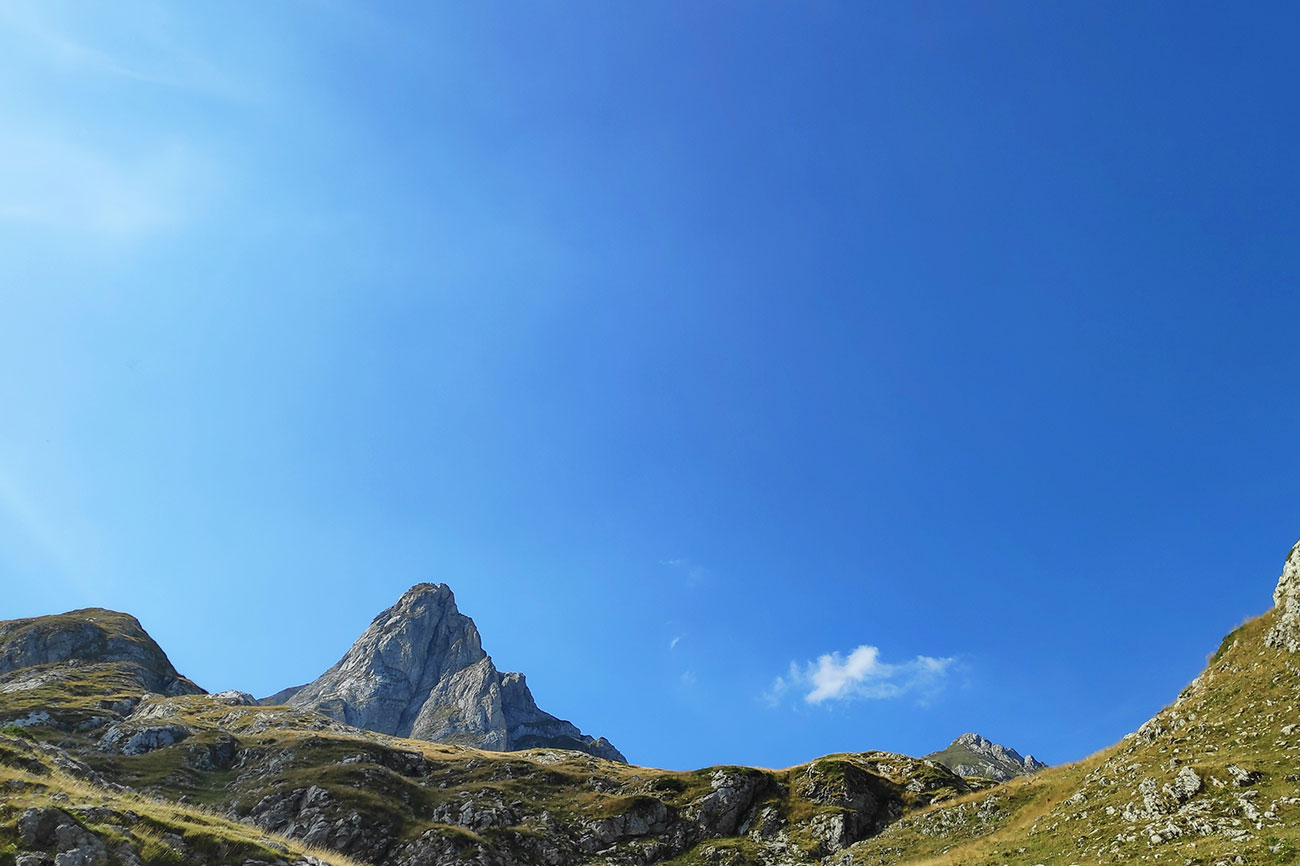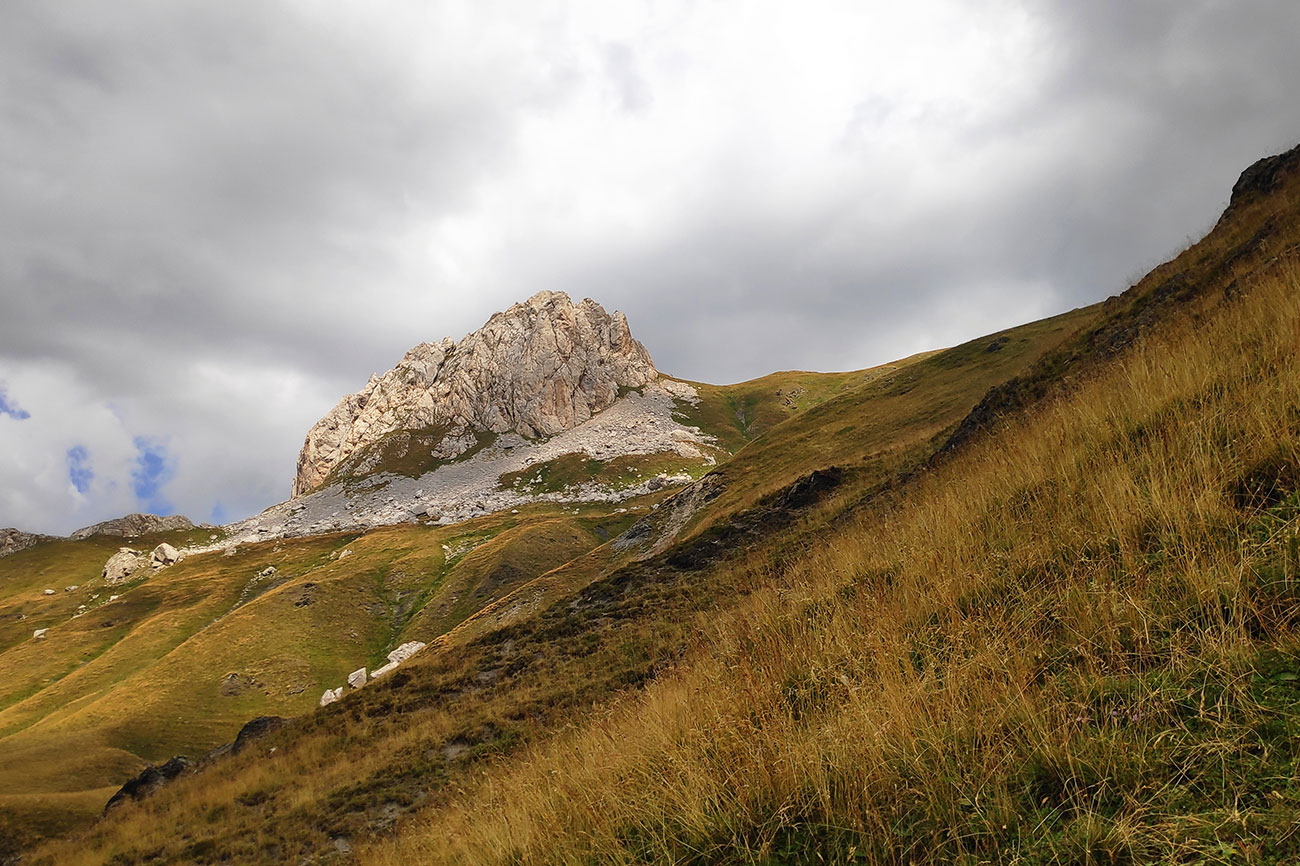Mount Korab
Mount Korab is the highest peak of the eponymous mountain range and the fourth highest mountain entirely located in the Balkan Peninsula, standing at 2,764 metres (9,068 ft).
The summit of the Korab mountain range in the Albanian-Macedonian border, Korab is the highest peak of Albania and the Republic of North Macedonia and also one of only two summits in Europe, which are the highest point for more than one country.The Korab is also the 18th most prominent mountain peak in the European continent and the third on the Balkan Peninsula.
Korab is situated within the Korab-Koritnik Nature Park. It is noted for its rich flora, including species such as Bosnian pine, European beech, Coppicing forest, and Alder forest.
The Korab range stretches over 40 kilometres (25 mi) in a north-south direction between the lower section of the Black Drin and its tributary Radika. It is located around the border triangle of Albania, North Macedonia and Kosovo, southwest of the Šar Mountains.
The peak is a very rugged mountain massif and consists mainly of shale and limestone of the Paleozoic period with block structures, as well as severely damaged gypsum rocks of Permo Triassic. On the west side, the mountain falls steeply over rock walls. The north side consists of craggy rocks. A kind of double peak, that of Korab II 2,756 metres (9,042 ft) is about 150 metres (490 ft) northwest of the peak within Albanian territory. On the same ridge are two other peaks rising over 2,700 metres (8,900 ft) such as Shulani i Radomires and Korab III. The southeast, stretching from a few rock bands broken meadows to the summit is accessed by very simply, and occasionally by shepherds with their flocks of sheep.
In addition to the Korab peak, there are several other, almost equally high elevations. North of the twin peaks are numerous other nameless, almost equally high rock towers. The peak located about 2 kilometres (1.2 mi) southwest, Korab-gate (Albanian: Maja e Portës së Korabit; Macedonian: Korapska Mala vrata) reaches 2,727 metres (8,947 ft). A few hundred yards south is another peak Maja e Moravës, which is only a little lower at 2,718 metres (8,917 ft).
The peaks are occasionally ruptured by radial tectonics in the shape of blocks that end in the Radika Valley on North Macedonia’s side. These blocks occasionally have steep slopes that reach up to 500 m (1,640 ft). In its highest part, above 2,000 m (6,562 ft), the climate is alpine and includes some alpine flora elements. The mountain is home to spectacular Korab Falls in the upper valley of the Dlaboka River. During spring time, the waterfall reaches a height of over 130 meters, which makes it the highest in North Macedonia. The state border intersects the higher peak, Great Korab.
Ascent from the Macedonian side involves entering the Macedonian-Albanian boundary area, for which a special permit is required from the Ministry of Internal Affairs of North Macedonia, although people regularly track on Korab without it.
The two main passes in the Korab ridge include the Little Korab Gate 2,465 m (8,087 ft) and Big Korab Gate 2,062 m (6,765 ft).
The mountain has a number of sub-peaks that are higher than 2000 metres. These include Korab II (unnamed peak) 2,756 m (9,042 ft), Korab III (unnamed peak) 2,724 m (8,937 ft), Korab Gates (peak) 2,727 m (8,947 ft), Maja e Moravës 2,718 m (8,917 ft), Shulani i Radomirës 2,716 m (8,911 ft) and Small Korab 2,683 m (8,802 ft).



